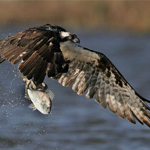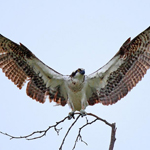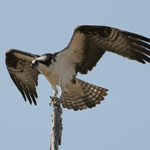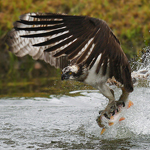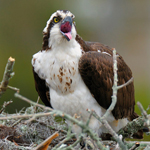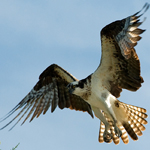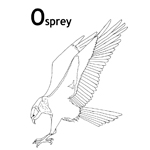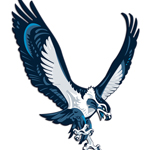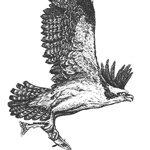
The Osprey, or "sea hawk", also called, "fish hawk", has long proved a puzzle for taxonomists. It has been included as both the largest of the hawks, with a wingspan of nearly six feet, and listed as a separate species alongside hawks and eagles. There are four recognized sub-species, except that they are not genetically distinct. As the name "sea hawk" implies, the osprey's diet is almost exclusively fish (up to 99%) and it is a familiar sight along nearly all the world's coasts. The osprey is the most widespread of all the raptors, being found on every continent, although it is only an over-wintering migrant to South America.
In modern times, the osprey has become a powerful symbol of conservation and environmental protection. During the 1950's - 1960's in the United States, the widespread use of the pesticide DDT had devastating effects of the osprey. DDT was washed from farmers fields by the rain into streams and rivers, where it became increasingly concentrated as it moved up the food chain. As an apex predator, the osprey's diet of fish nearly proved its undoing, as high concentrations of DDT effected the osprey's ability to produce eggs with strong enough shells to survive to hatching.
The book, Silent Spring, by Rachel Carson brought this to the public's attention in 1962 and made the New York Times best-seller list. DDT was banned in 1972. The ban on DDT, public efforts to protect osprey habitat, and a campaign to build osprey nesting platforms, ultimately resulted in the recovery of osprey populations. Today, the osprey is prominently featured on over fifty different stamps around the world, and is a symbol of the success of the environmental movement.
If you love Mother Earth, a tattoo of an osprey might be the perfect way to express it.
See also: Bird Tattoo Index.


